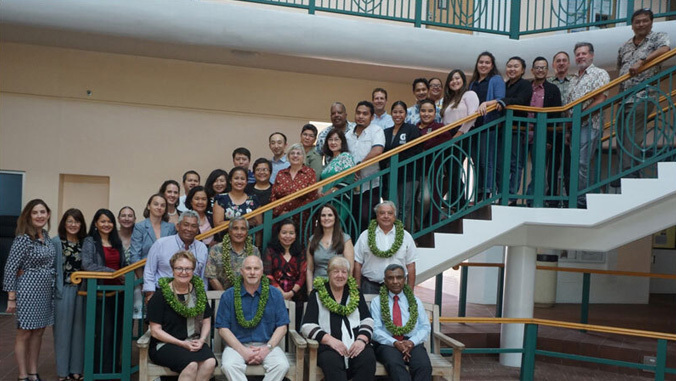
The University of Hawaiʻi Cancer Center and the University of Guam (UOG) have been awarded a total of $14 million over five years to mitigate the impact of cancer on Pacific Islanders through cancer research, career training and community outreach. The UH Cancer Center-UOG collaboration, known as the Pacific Island Partnership for Cancer Health Equity (PIPCHE), is funded by the National Cancer Institute (NCI) through August 31, 2025.
Funds from PIPCHE are used to support the research infrastructure needed to address significant cancer health disparities in the Pacific. PIPCHE is the only NCI-funded Pacific-based research partnership that addresses cancer disparities in the peoples of Hawaiʻi, Guam and the U.S. Affiliated Pacific Islands, which include the Commonwealth of the Northern Marianas, American Samoa, the Federated States of Micronesia, the Republic of the Marshall Islands and the Republic of Palau. It also provides research training for students and early-career scientists while engaging communities in outreach activities to advance knowledge, awareness, behavior change and public health policy in Guam and Hawaiʻi.
“The negotiated partnership between UOG and the UH Cancer Center uses cancer research as a platform to bring equity and resiliency to the Indigenous Pacific peoples. We work towards reciprocity, transparency and accountability for each respective partner in all work with our communities,” said Neal A. Palafox, researcher and principal investigator at the UH Cancer Center.”
Palafox added, “The investment has brought forward Indigenous Pacific cancer researchers and scientific leaders, relevant Pacific-based interventions to address cancer disparities, and has increased the capacity for both institutions to understand and achieve cancer health equity in the Pacific. This partnership has been a fun and eye-opening voyage.”
The first PIPCHE grant was awarded to the UH Cancer Center and UOG in 2003. Since then, the funds have supported 25 research projects, trained more than 100 underrepresented students and early career scientists, contributed more than 100 peer-reviewed publications and, in the last cycle alone, acquired $34 million-plus in additional external funds to explore research questions that are unique to the Pacific region.

